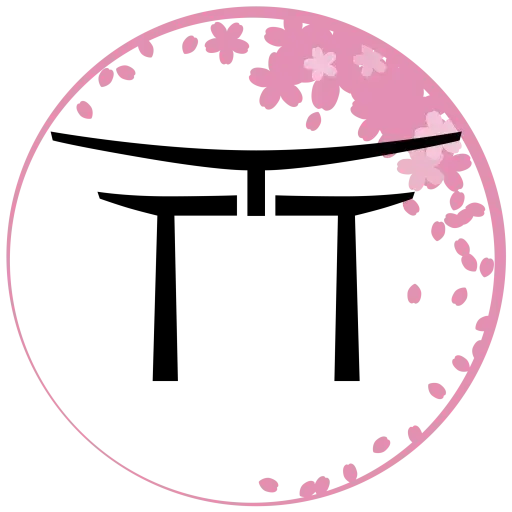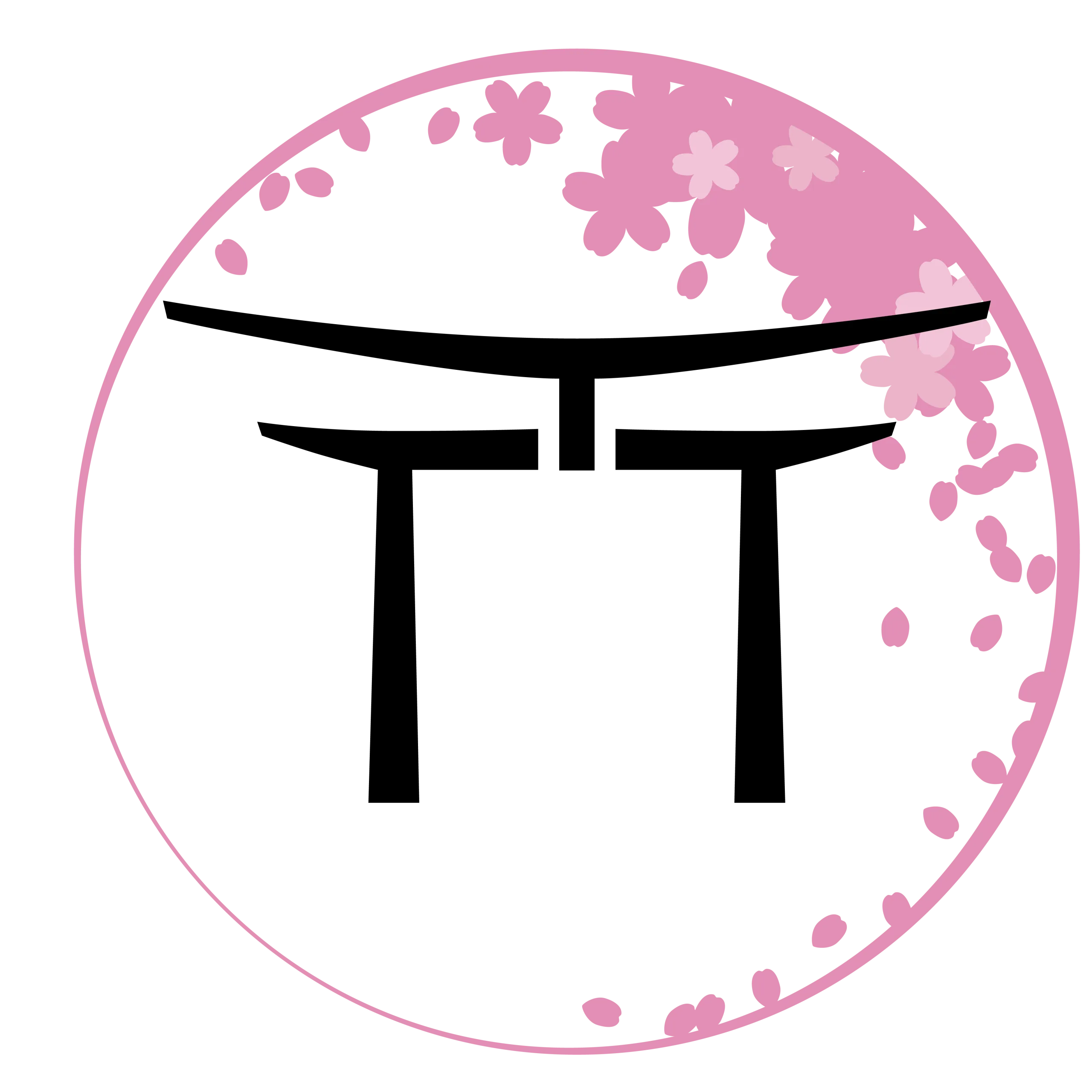Baby Traditions in Japan: Omiyamairi and Okuizome
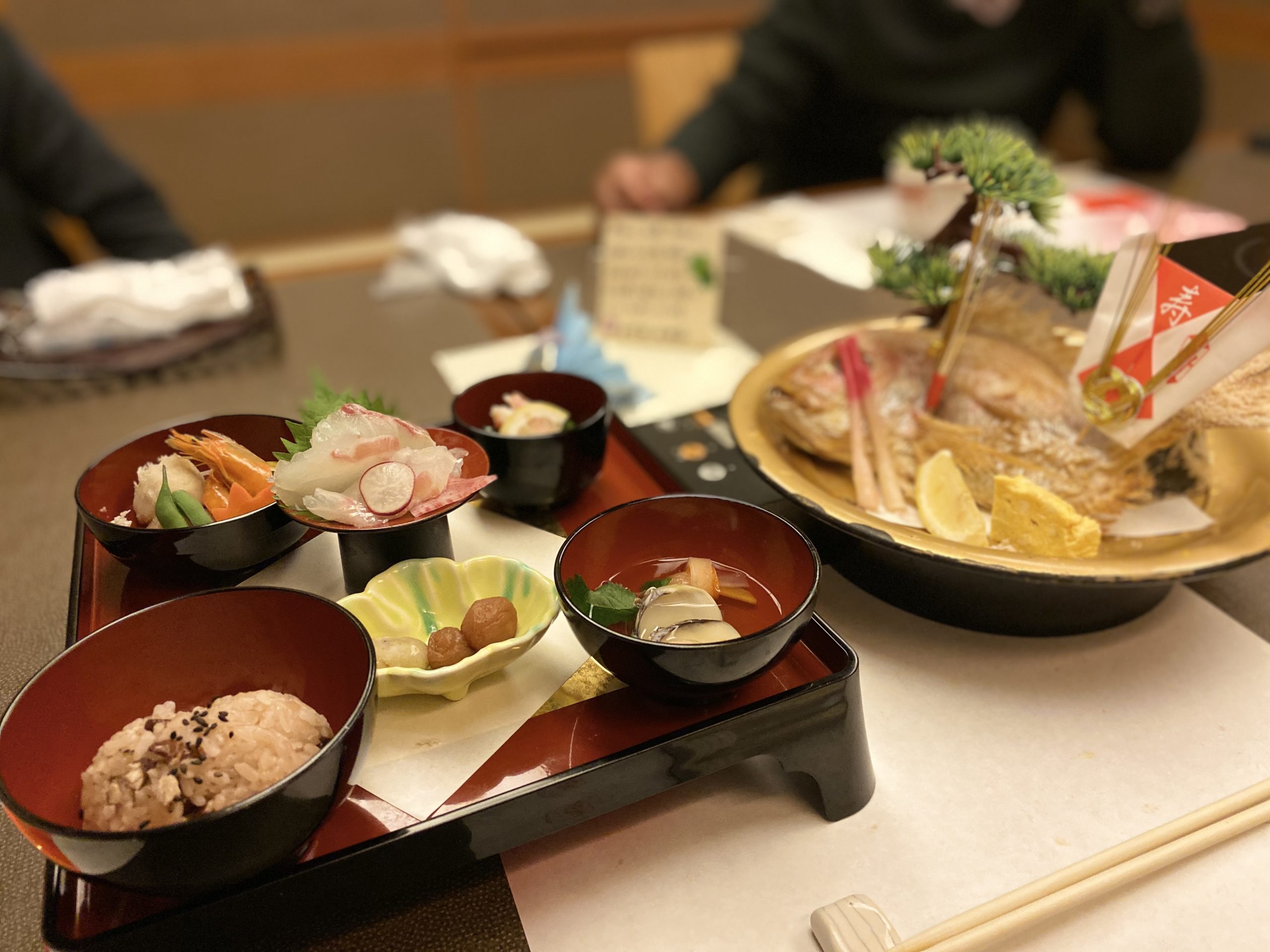
Last Updated on January 16, 2025 by Kay
This post may contain affiliate links, meaning I may earn a small commission on any purchases through those links at zero additional cost to you. Whatever I make goes to keeping this website running and I am forever grateful for the support. See my Privacy Policy for more information.
Two weeks ago, my in-laws made the journey to Tokyo for my daughter’s omiyamairi and okuizome.
Omiyamairi (お宮参り) is a Japanese tradition in which newborns visit a Shinto shrine for the first time. This usually takes place during the first month of life while okuizome (お食い初め) is a ritual to celebrate the baby’s 100 days of life in which the baby “eats” solid food for the first time.
In some families, including my husband’s, these two traditions are done at the same time when a baby turns three months old. Personally, I’m glad that omiyamairi was done at three months because I don’t know whether I would have been able to handle it with a one-month-old!
Table of Contents
Omiyamairi Family Photos
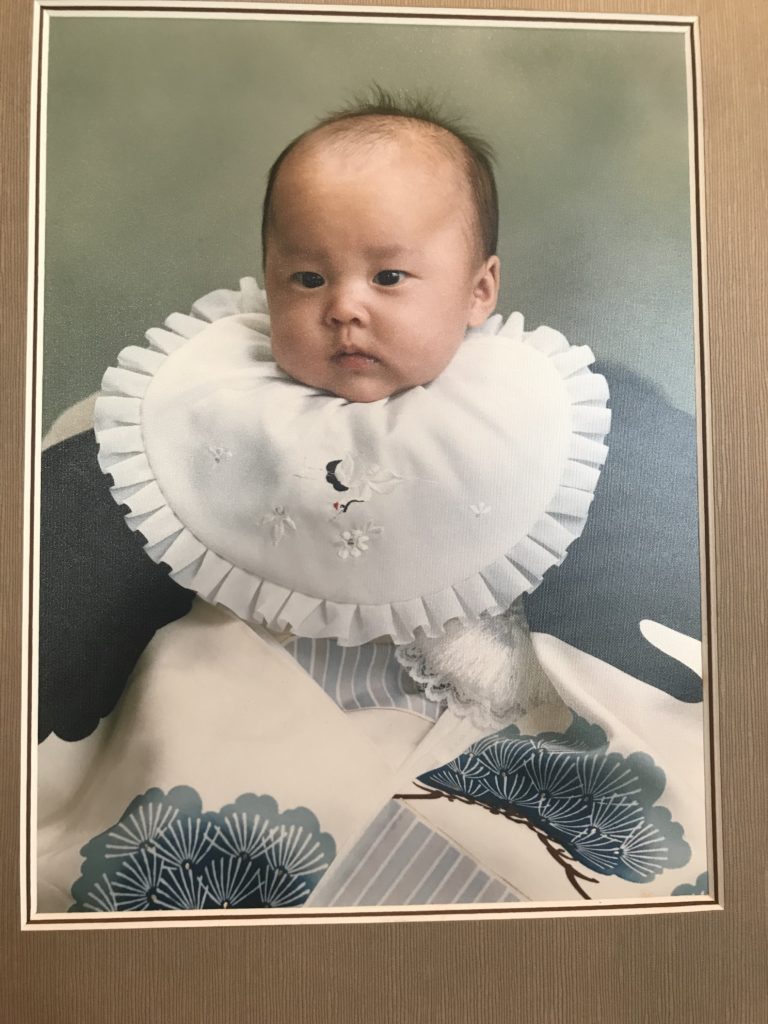
My husband’s omiyamairi photo in the 80s.
Before the omiyamairi, families tend to go to photo studios to get photos of the baby and a family photo taken. We had booked ours over a month in advance.
The day before the photo shoot, we went to the studio and picked out the baby’s kimono (which would be draped over her) and a western-style dress for her to wear, as well as my own kimono. (Other than the baby, I was the only one wearing a kimono, which felt a little strange because I’m not Japanese but it did look gorgeous and I don’t have many opportunities to wear a kimono nowadays.)
It’s completely up to the mother whether or not she wants to wear a kimono and it does cost extra for the kitsuke (dressing) and hairstyling. Otherwise, parents wear suits or moms wear a simple dress. Most studios allow both mom and baby to wear the rental kimono to the shrine that same day at no additional cost.
Interestingly, if you bring your own kimono, you’re required to pay an additional fee.
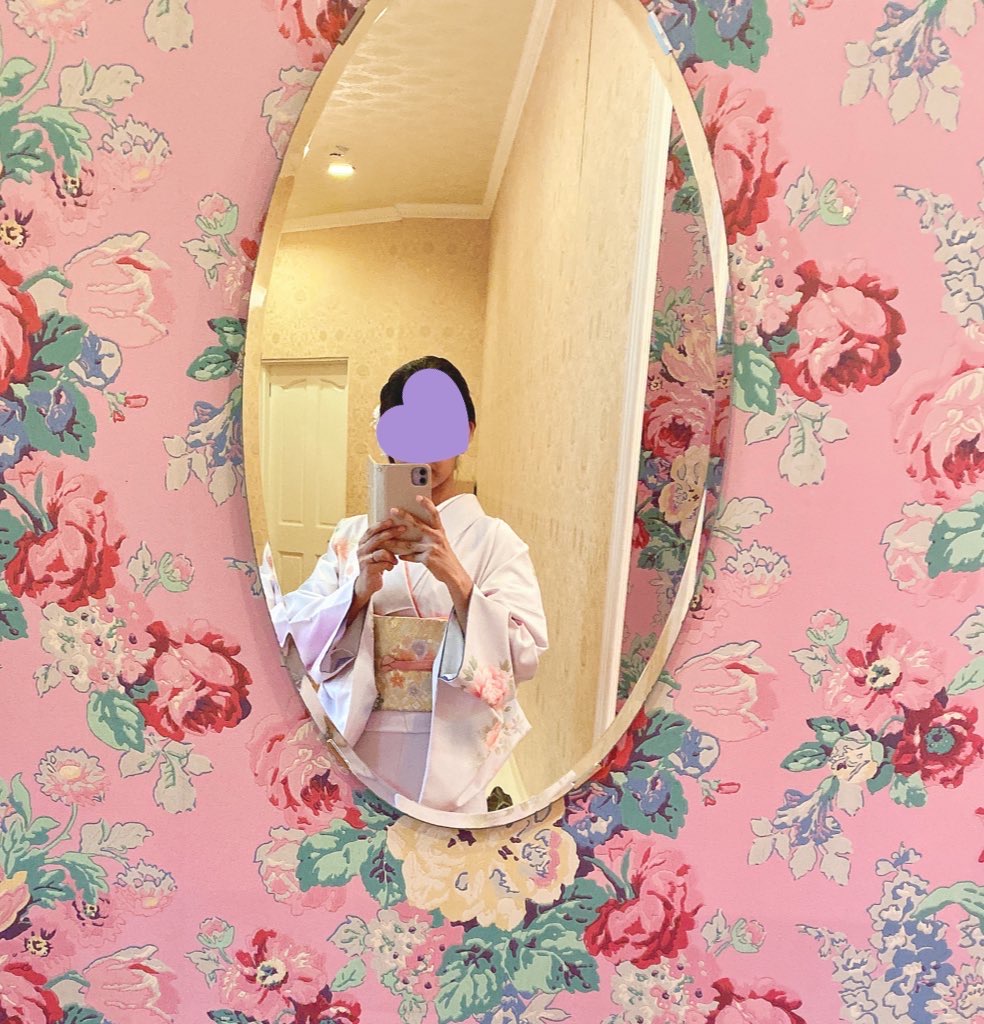
My rental kimono
We had planned on going to the shrine right after the photoshoot, which was scheduled for noon. Unfortunately, Baby A was in a mood. Despite the photographer having two assistants who were in charge of trying to make her smile, she cried the entire time she had her kimono on.
The photographer managed to get a few shots where she was not crying but not exactly smiling either. We ended up letting her nap for about 30 minutes and when it came time for her next outfit, the dress, she was all smiles and a completely different baby.
The photo shoot ended up taking almost four hours and by the time it ended, it was too late to go to the shrine.
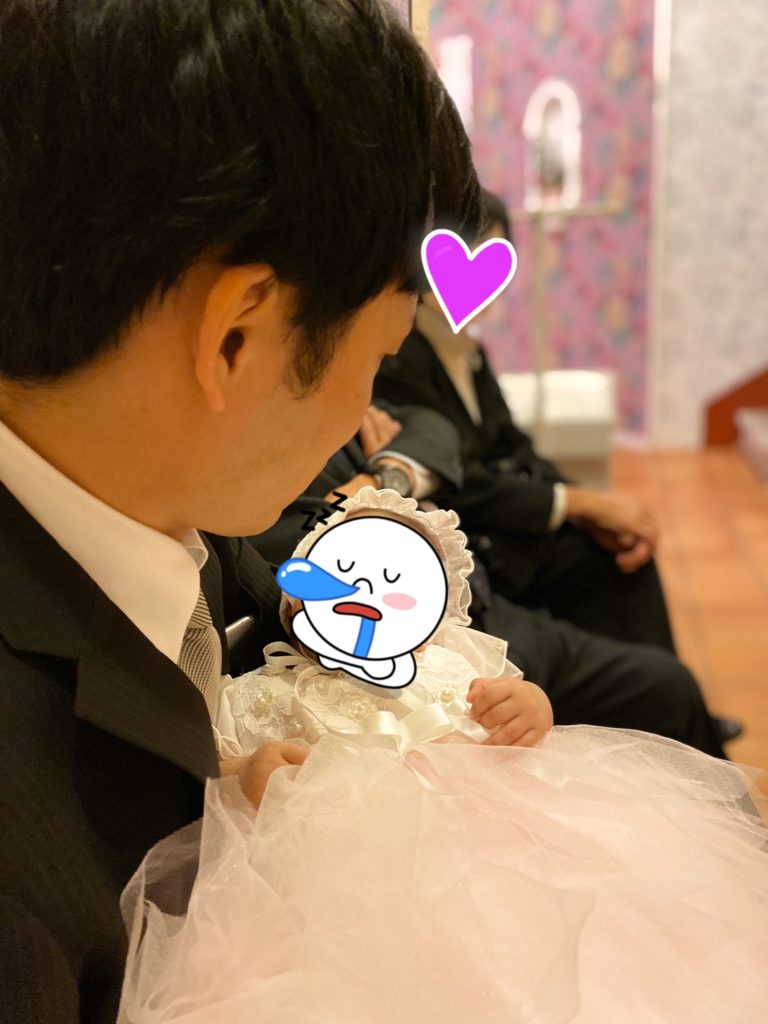
Baby A taking a much-needed nap
Okuizome
After the photoshoot, we went to a shabu-shabu restaurant that we had booked for her okuizome. This tradition is held to pray for the baby’s health, their growth, and for them to never go hungry in the future.
We had a spacious Japanese-style room in the restaurant that included a small futon for the baby to lie down on. Before we ate, the baby’s “meal” was brought to us.
Each dish had meaning to it and the server instructed us the order in which to give the dishes to the baby and what to say. I held the baby while my mother-in-law used chopsticks to pick up a bit of a dish and pretend to feed the baby.
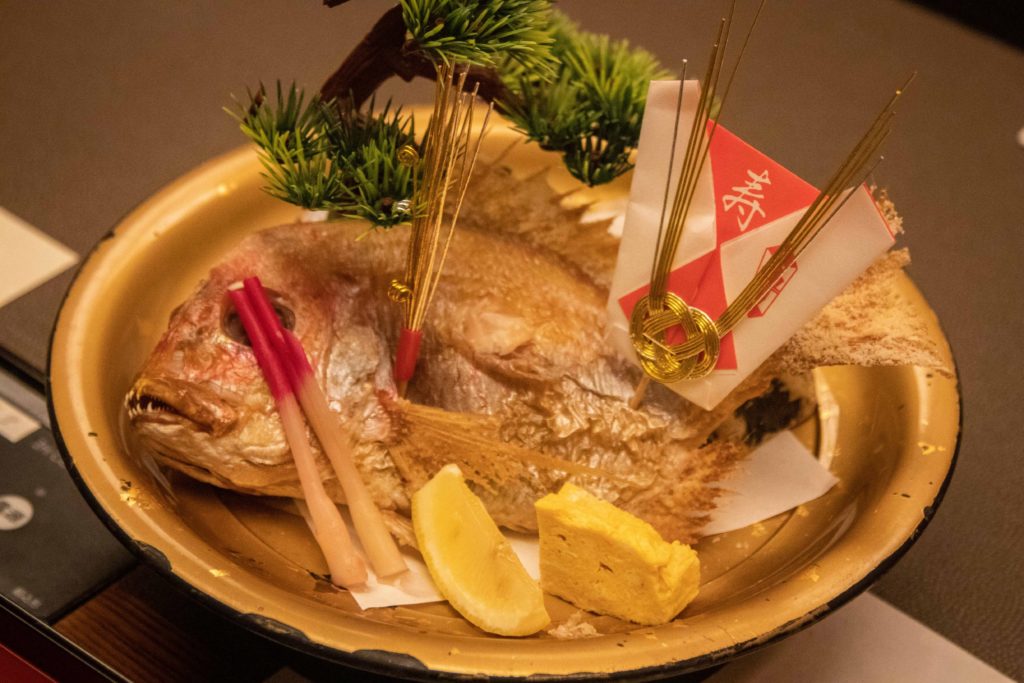
Sea bream is an auspicious fish in Japanese culture. It’s called “tai” in Japanese, which is linked to “medetai,” meaning “a joyous event” or “cause for celebration”
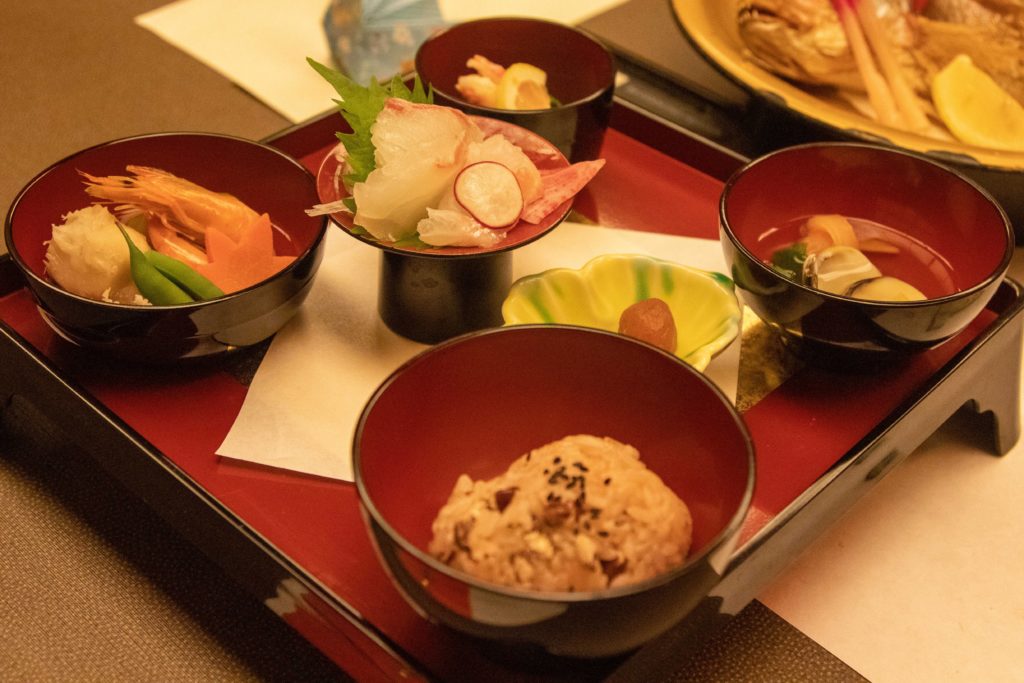
The lacquerware bowls are different colors depending on whether your baby is a girl or a boy. Boys have entirely red bowls while girls have bowls that are black on the outside.
Here are the dishes my daughter was served and the meaning behind them:
○ Sashimi
○ Soup with clams (for the baby to have a good partner)
○ Simmered vegetables and fish (for longevity and becoming a person who is future-oriented)
○ Pickled plums (a symbol for health and longevity)
○ Bamboo shoots (for health)
○ Rice with azuki beans (believed to dispel bad luck).
There were also small decorative stones on the platter, which symbolize the baby’s teeth becoming strong, the baby becoming a patient person, and longevity.
After my mother-in-law “fed” our daughter, the server took a family photo of us, which they printed and then presented to us in a cute sea bream-shaped card before we left the restaurant.
(Don’t worry, none of this food went to waste and after having some excellent shabu-shabu and sukiyaki, my husband and in-laws finished Baby A’s meal for her.)
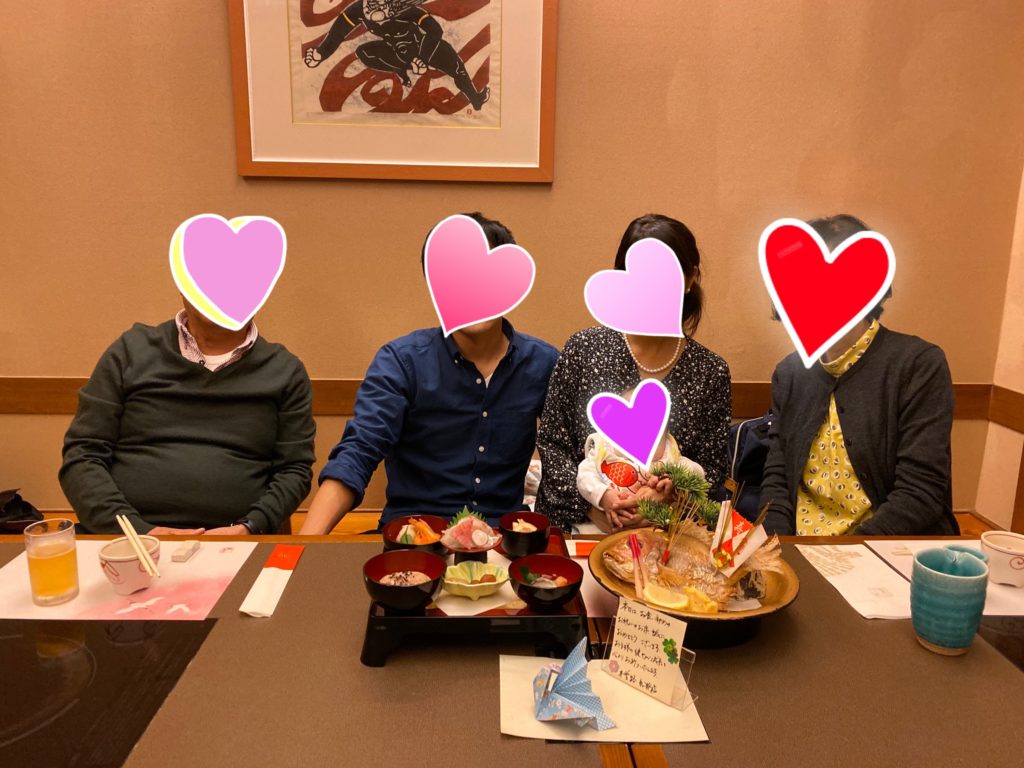
Instead of going to a restaurant, some families hold okuizome at home.
MAMADAYS has made a nice video about how you can do this so check it out!
Omiyamairi
The next day, bright and early, we went for the omiyamairi.
Families can choose to wear traditional Japanese clothing, like our family did for the photoshoot, or western clothing (suits for the adults, white ceremony dress for the baby).
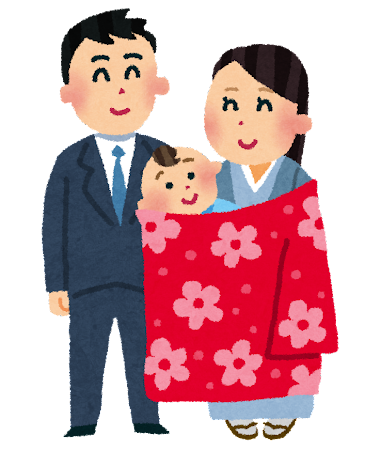
An example of what traditional Japanese clothing for omiyamairi looks like
As my daughter’s omiyamairi was the day after the photoshoot, we couldn’t wear traditional Japanese clothes.
But since we had been prepared for rain anyway, my mother-in-law had bought Baby A a white ceremony dress and I wore one of my work suits and dressed it up with a pearl necklace and earrings. My in-laws and husband were in suits as well.
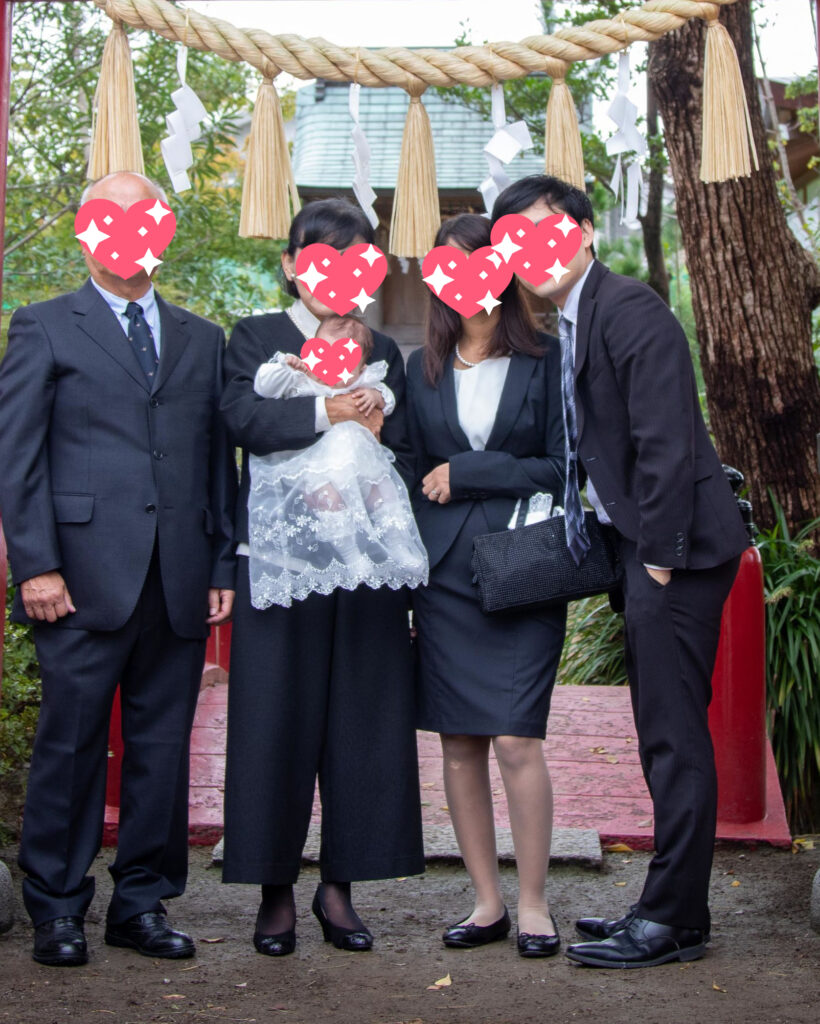
What we wore when we visited the shrine for omiyamairi
The shrine was somewhat crowded because of shichi-go-san, which is another ritual for children when they turn 7 (shichi), 5 (go) and 3 (san).
We registered for our daughter’s omiyamairi prayer at the shrine, paid the minimum 7000 yen fee (the fee varies depending on the shrine), and then waited in a room with other babies and shichi-go-san children.
When our number was called, we went to the prayer room in the shrine with the other families.
The seats were color-coded and we were instructed that the person holding the baby was supposed to sit on a particular seat. The priest then began the ritual to pray for the health of all the children in attendance and each child’s name was read aloud.
To be honest, we couldn’t hear much of what the priest was saying because Baby A had soiled her diaper right before we entered the room and was screaming her head off! She was the only baby crying too so it was a bit embarrassing but it couldn’t be helped.
The ceremony was over in about fifteen minutes and as we left the room, we were handed a white bag containing a small clay figure of a cat (a symbol of the shrine we visited), an eta to write a message for your child to hang at the shrine, some umeboshi (pickled plums), ofuda (a paper amulet for protection), chopsticks, an omamori (charm), and osagari (an offering for the gods which you then take back to eat),
After changing Baby A’s diaper (the shrine had a diaper-changing and nursing room, which was great, but the sheet on the changing table was not the cleanest. Thankfully we had our portable changing sheet with us), we took some pictures around the temple before heading home.
It was a busy, event-filled weekend and I felt very fortunate to take part in these rituals as it was a part of Japanese culture that not many people get to experience.
If you’re interested in finding a photographer for your omiyamairi photos, I highly recommend using the site fotowa.
This site is very easy to use and allows you to search for photographers in Japan for various occasions. You can filter according to where you live and the time and date that works best for you.
All photographers have ratings and best of all, they all charge the same rate: 21,780 yen for weekdays and 26,180 yen for weekends and holidays.
This is something I wish I had known about much earlier so now I’m sharing it with all of you.


My husband and I used fotowa to take family photos when our daughter was two to take some photos of us in Tokyo before we moved to Osaka. I also used fotowa for my daughter’s shichi-go-san photos when she was three.
If you want to read about my family’s experience using fotowa, as well as other family photography services in Japan, check out this article.
